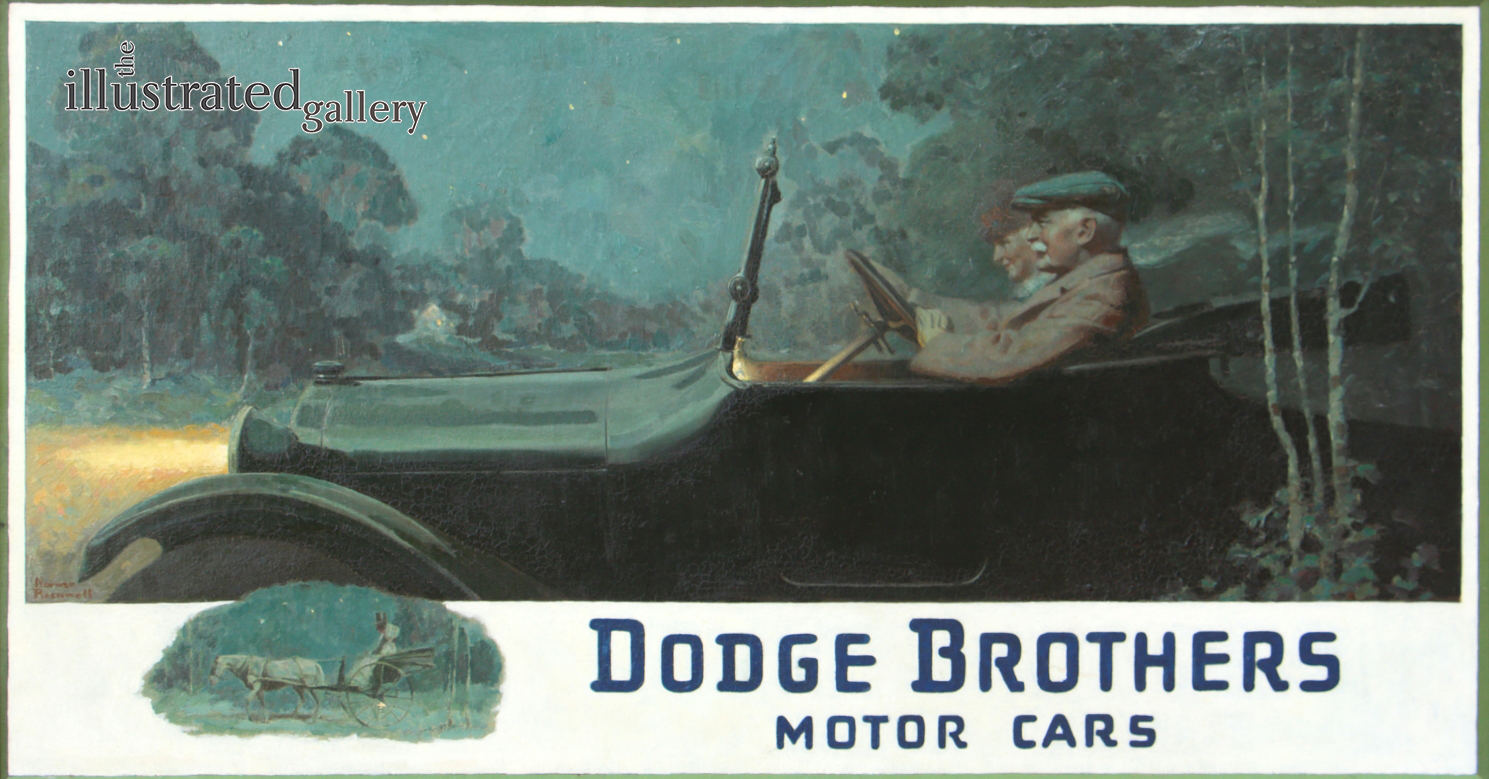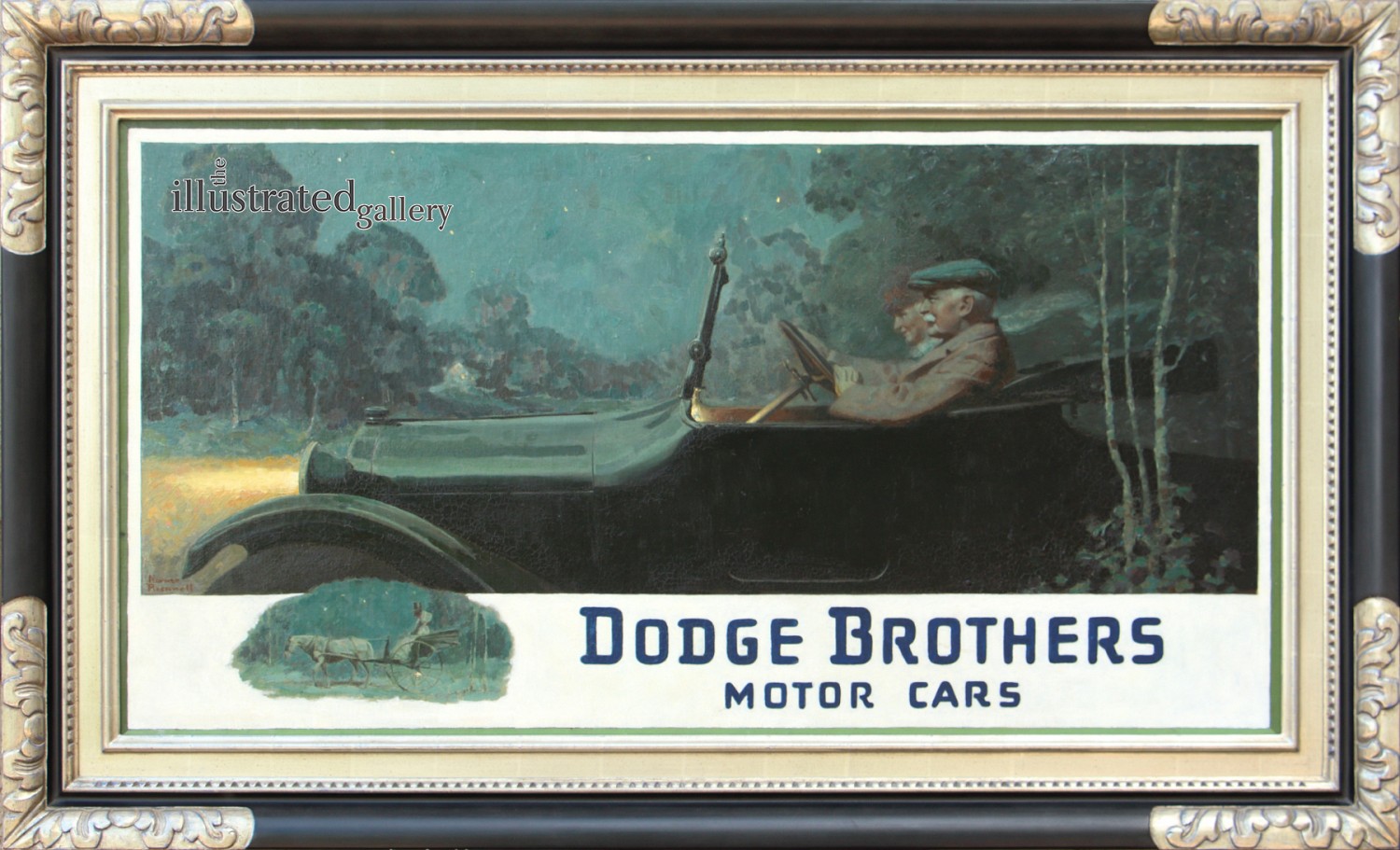"Couple's 25th Wedding Anniversary" Lot no. 2175
By Norman Rockwell (1894-1978)
1925 (Estimated)
24.00" x 45.00", Framed 36.00" x 57.00"
Oil on Canvas
Signed Lower Left
REQUEST PRICE
PURCHASE REQUEST
Literature:
Laurie Norton Moffatt, Norman Rockwell: A Definitive Catalogue, Stockbridge, Massachusetts, 1986, vol. I, no. A242, p. 362, illustrated
Notes:
Painted circa 1925. A letter from Norman Rockwell to the Graham family discussing the painting accompanies the lot.In April 1921, Dodge Brothers entered into a burgeoning partnership with the Graham Brothers, an Evansville, Indiana family-run, truck manufacturing business, headed by three siblings, Joseph B., Robert C. and Ray A. Graham. By 1920, their company was building complete truck and bus bodies with various engines which, in April 1921 caught the attention of Dodge’s president, Frederick J. Haynes. Haynes saw the Graham product as a way to get Dodge into the heavy truck business without compromising their own car production. The two companies agreed to have Graham Brothers build trucks solely with Dodge engines and drive trains, and sell them exclusively through Dodge dealerships nationwide. The partnership resulted in a new name, Graham Brothers, Inc., a company relocation to Detroit, and the opening of numerous factories nationwide over the next several years. In 1925, Joseph, Robert and Ray were appointed Dodge directors and executives, and were among the largest stockholders of the company. By 1926, Graham Brothers, Inc. was the largest exclusive truck manufacturer in the world. In later years, the brothers went on to build the Graham-Paige Motors Corporation, further expanding their success in the automotive business.Around 1925, the current painting was commissioned from Normal Rockwell to commemorate the company’s 25th anniversary and for use in a Dodge Brothers automobile advertisement. The automobile and its trappings was not a new subject for Rockwell who over his extensive career created advertisements for other companies such as Overland Motors, B.F. Goodrich Company, Goodyear Tire & Rubber Company, General Motors and Plymouth. Here Rockwell, in his inimitable style created an image extolling the virtues of industrial progress and modern day society. An elderly couple–Rockwell’s own parents posed as the models–is driving a Dodge motor car acquired in celebration of their own 25th wedding anniversary. The proud owners have a look of great satisfaction upon their faces, happily riding through the star-filled evening, with the car’s powerful headlights guiding them safely through the countryside. Just below them, Rockwell humorously suggests a memory of the couple in by-gone days, bumping along in their horse drawn buggy, who now after 25 years are happily embracing and savoring this modern convenience created by Dodge.
Explore related art collections: Automotive/Transportation / Seniors / Men / 1920s / Romance / $100,000 & Above
See all original artwork by Norman Rockwell
ABOUT THE ARTIST
The pictures of Norman Perceval Rockwell (1894-1978) were recognized and enjoyed by almost everybody in America. The cover of The Saturday Evening Post was his showcase for over forty years, giving him an audience larger than that of any other artist in history. Over the years, he depicted there a unique collection of Americana, a series of vignettes of remarkable warmth and humor. In addition, he painted a great number of pictures for story illustrations, advertising campaigns, posters, calendars and books.
As his personal contribution during World War II, Rockwell painted the famous “Four Freedoms” posters, symbolizing for millions the war aims as described by President Franklin Roosevelt. One version of his “Freedom of Speech” painting is in the collection of the Metropolitan Museum of Art.
Rockwell left high school to attend classes at the National Academy of Design, and later studied under Thomas Fogarty and George Bridgeman at the Art Students League in New York. His two greatest influences were the completely opposite titans Howard Pyle and J.C Leyendecker.
His early illustrations were done for St. Nicholas magazine and other juvenile publications. He sold his first cover painting to the Post in 1916, and ended up doing over 300 more. Presidents Eisenhower, Kennedy, and Johnson sat for him for portraits, and he painted other world figures, including Nassar of Egypt and Nehru of India.
An important museum has been established in Stockbridge, Massachusetts, where he maintained his studio. Each year, tens of thousands visit the largest collection of his original paintings extant.



